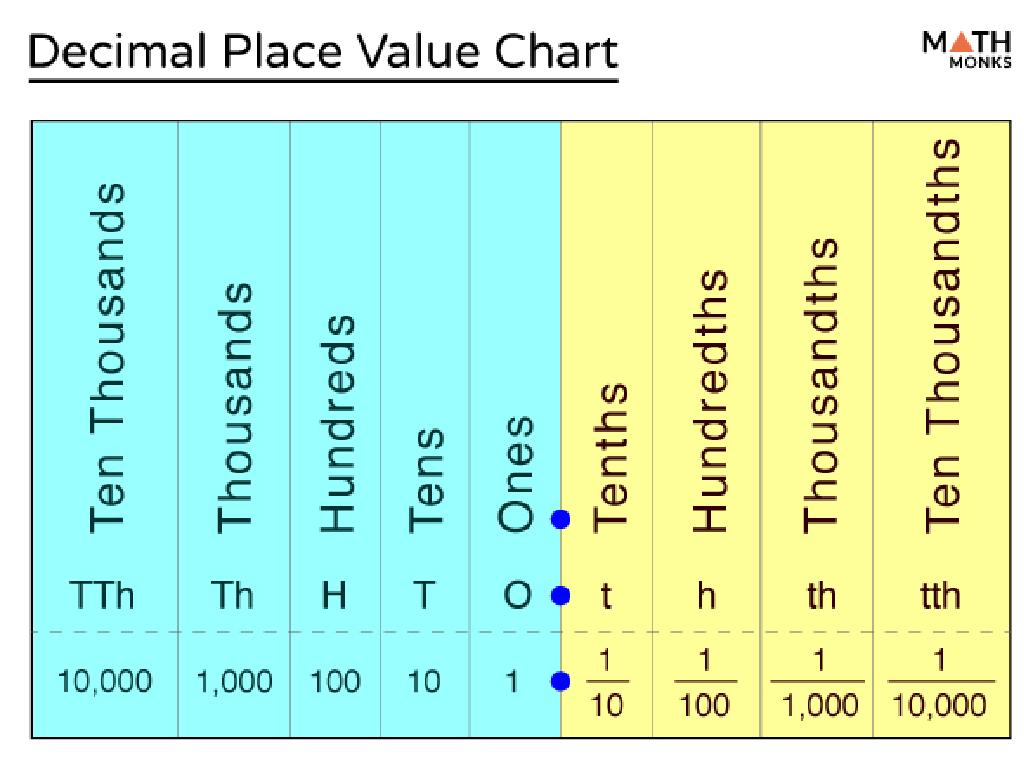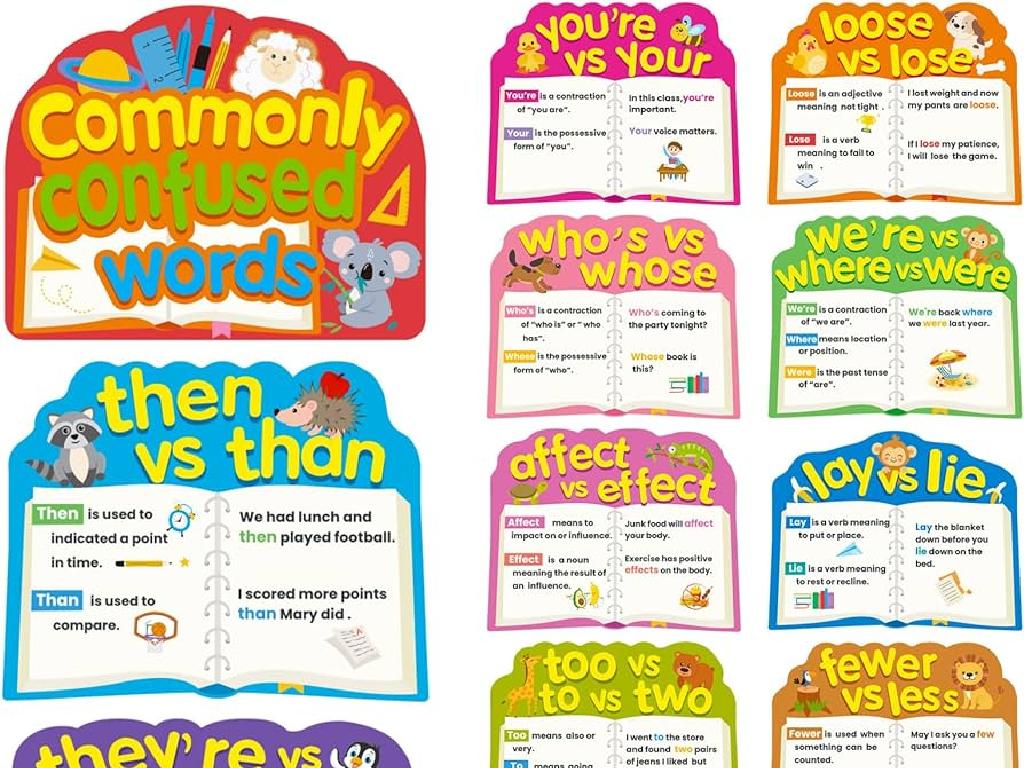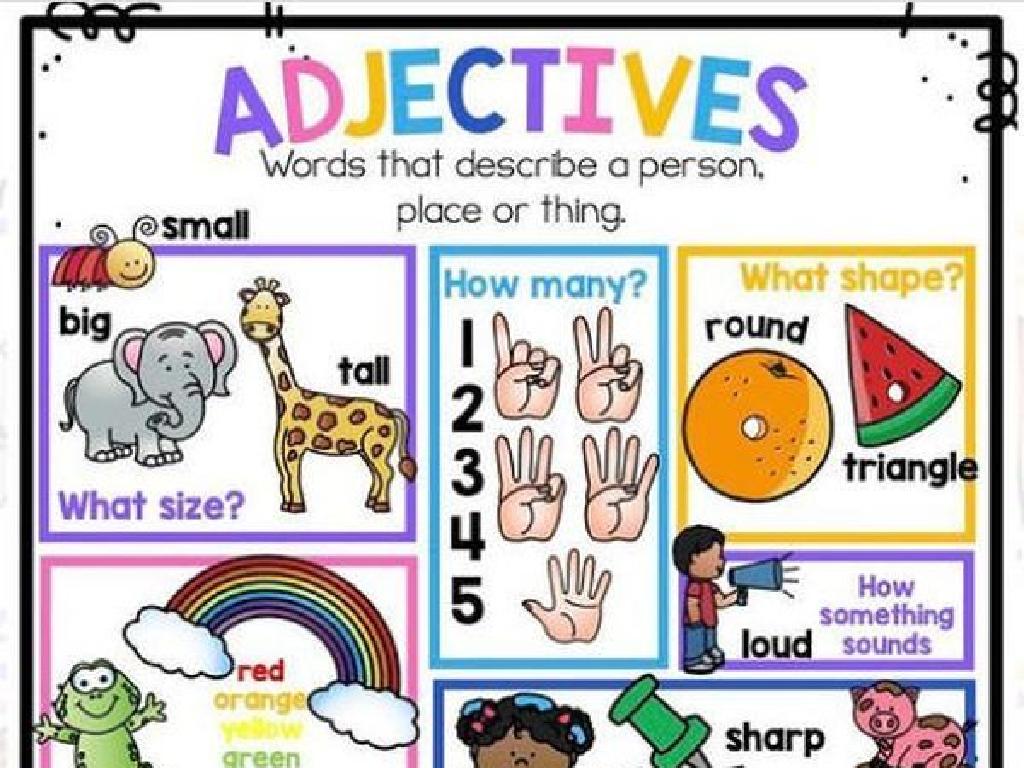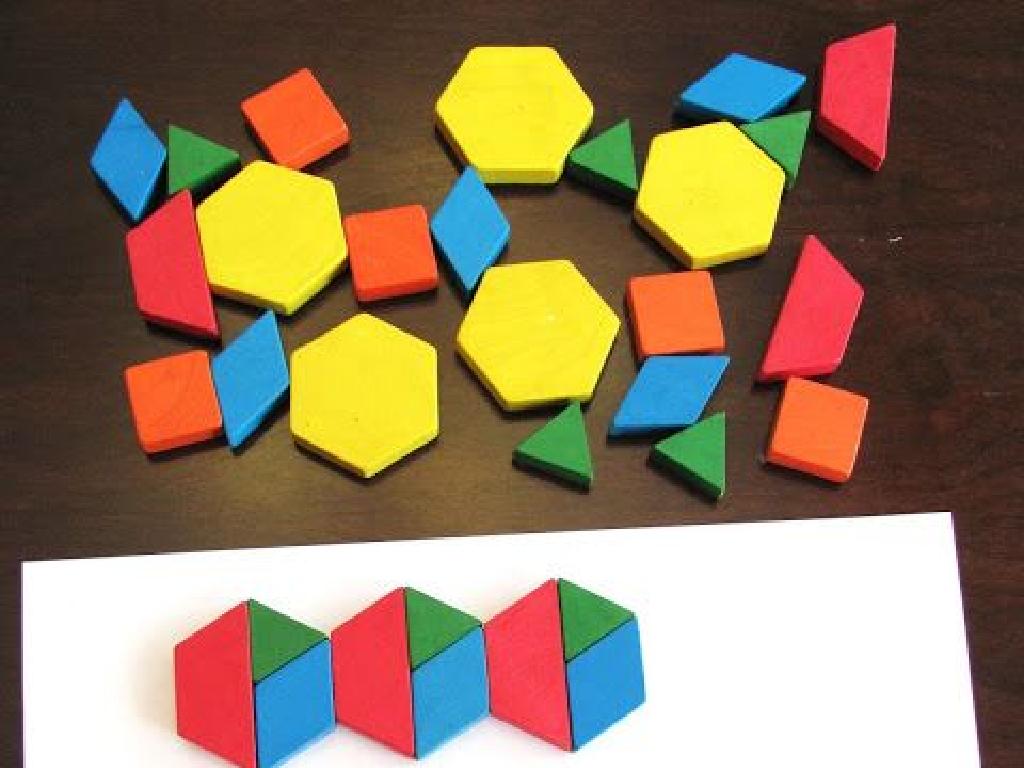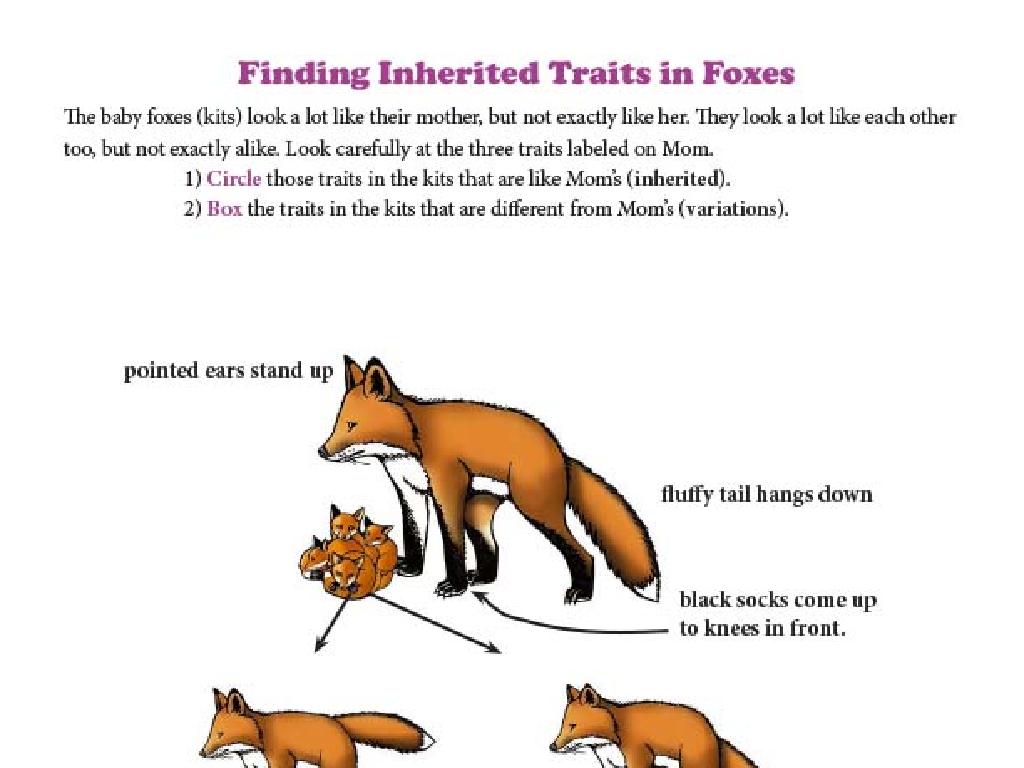Read Science Fiction With Illustrations
Subject: Language arts
Grade: Third grade
Topic: Literary Texts: Level 1
Please LOG IN to download the presentation. Access is available to registered users only.
View More Content
Welcome to Science Fiction!
– What is Science Fiction?
– It’s a genre with futuristic, imaginative elements.
– Exploring Imaginary Worlds
– These worlds have advanced tech, space travel, and more.
– Why Illustrations Matter
– Pictures help us visualize and understand the story better.
– Engaging with Sci-Fi Stories
|
This slide introduces students to the exciting genre of science fiction, which often includes futuristic technology, space exploration, and imaginative concepts. Discuss the definition of science fiction and its characteristics. Highlight the importance of illustrations in these stories as they aid in bringing the text to life, making the story more engaging and easier to understand for young readers. Encourage students to think about how pictures help them connect with the story and characters. Ask them to share their favorite science fiction stories or illustrations in the next class.
Exploring Science Fiction in Literature
– What is Science Fiction?
– A genre with creative yet possible stories
– Examples of Sci-Fi elements
– Space and time travel, cool gadgets!
– Sci-Fi and future technology
– Imagines how science might change our future
– Why Sci-Fi is fun to read
|
Science Fiction, often called Sci-Fi, is a very exciting genre for young readers as it expands their imagination beyond the world they know. It includes elements that could be possible based on science, like space exploration or robots. When discussing Sci-Fi, use illustrations from popular children’s books or movies to make it relatable. Encourage students to think about what inventions they would like to see in the future and how they might change our lives. This will help them connect with the concept of Sci-Fi and understand its relevance to innovation and creativity.
Exploring Science Fiction
– Imagine future worlds
– Think of living on Mars or flying cars!
– Science shapes the story
– Gadgets, robots, and space travel are key.
– Adventure and mystery await
– Heroes embark on exciting quests.
– Illustrations bring it to life
– Pictures help us see the future.
|
This slide introduces students to the exciting genre of science fiction, which often features futuristic settings and advanced technology. Encourage students to use their imagination to envision what life might be like in the future. Discuss how science and technology play a central role in these stories, often driving the plot and presenting challenges for the characters to overcome. Highlight the elements of adventure and mystery that make these stories engaging and fun to read. Lastly, emphasize the importance of illustrations in bringing these futuristic worlds to life, helping readers to visualize the settings and characters described in the text. Ask students to share their favorite science fiction stories or illustrations and discuss what makes them interesting.
The Power of Illustrations in Science Fiction
– Illustrations bring stories to life
– Pictures help us see the action and characters
– They add excitement and detail
– Colors and designs make the story more engaging
– They clarify complex ideas
– Difficult concepts are easier to grasp with visuals
– They introduce us to new worlds
– Illustrations show us places we’ve never imagined
|
This slide aims to explain to third-grade students the importance of illustrations in science fiction literature. Illustrations serve as a bridge between the text and the reader’s imagination, making the story more vivid and engaging. They can turn abstract or complex ideas into something concrete that young readers can understand. Additionally, illustrations often provide additional details that enrich the narrative and stimulate the students’ creativity, especially when dealing with futuristic or alien settings that are common in science fiction. Encourage students to discuss how illustrations help them understand the story and to share their favorite illustrations from the books they’ve read.
Reading with Illustrations: Dive into Sci-Fi!
– Preview pictures before reading
– Illustrations complement the story
– Pictures can show us the setting or a character’s emotions
– Discuss visuals with classmates
– Share what you think the images represent
– How pictures enhance understanding
– Think about why the illustrator chose those images
|
This slide is aimed at helping third-grade students understand the importance of illustrations in science fiction literature. Begin by encouraging students to look at all the pictures before they start reading. Explain how illustrations provide clues about the story and can help set the tone or mood. During the class discussion, prompt students to describe what they see and how they think it relates to the story. Ask them to consider what the illustrations tell us about the setting, characters, and events that might not be explicitly stated in the text. This activity will enhance their comprehension and ability to interpret visual elements in conjunction with written words.
Exploring Science Fiction: Our Story Adventure
– Introduce a sci-fi book with pictures
– Read the title and the author’s name
– Make predictions from the cover
– Look at the cover art. What do you think will happen in the story?
– Discuss what science fiction means
– Science fiction often involves space, future tech, or amazing discoveries.
|
Begin the class by showing the students the science fiction book you will read together, making sure the illustrations are visible to everyone. Read the title and the author’s name aloud and then ask the students to examine the cover. Encourage them to make predictions about the story based on what they see. This activity stimulates their imagination and sets the stage for the reading. Discuss the genre of science fiction, highlighting elements like space travel, futuristic technology, and extraordinary adventures that they might encounter in the story. This will help them to contextualize the story and understand the genre better.
Reading Time: Dive into Sci-Fi!
– Read chapter one as a class
– Discuss setting, characters, plot
– Setting: where/when story takes place. Characters: who is in the story. Plot: what happens.
– How illustrations aid understanding
– Do pictures help imagine the world? How?
– Share thoughts on the story
|
Begin the class by reading the first chapter of a selected science fiction book together. This will help students get acquainted with the text and illustrations. After reading, engage the class in a discussion about the setting, characters, and plot to check their comprehension and encourage critical thinking. Ask them how the illustrations contribute to their understanding of the story, which will help them appreciate the role of visual elements in literature. Encourage students to express their thoughts and predictions about the story, fostering a collaborative learning environment.
Class Activity: Create Your Own Sci-Fi Illustration
– Imagine a scene from our story
– Draw the scene on paper
– Share your artwork with the class
– Explain the scene you chose
|
This activity is designed to foster creativity and comprehension. Students will think back to the science fiction story read in class and select a scene that stood out to them. They will then create their own illustrations, allowing them to engage with the text in a visual and artistic way. Once completed, students will present their drawings to the class, explaining why they chose that particular scene and what it means to them. This will help them practice their speaking skills and ensure they understand the story. For the teacher: Prepare drawing materials beforehand and consider grouping students for the sharing portion to make it more manageable. Possible variations of the activity could include creating a comic strip, designing a new cover for the story, or drawing a ‘what happens next’ scene.

